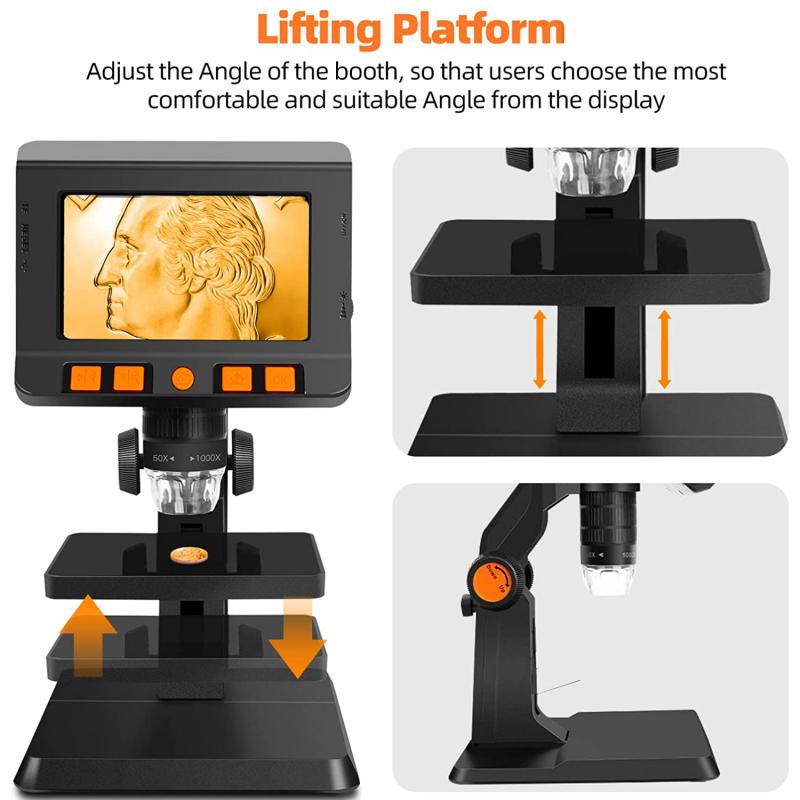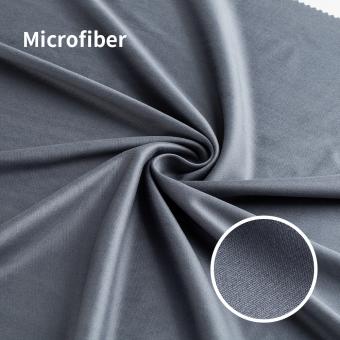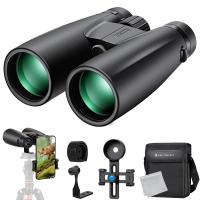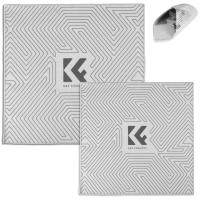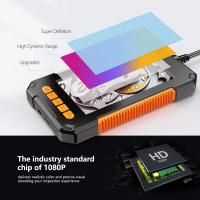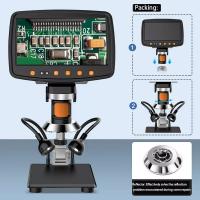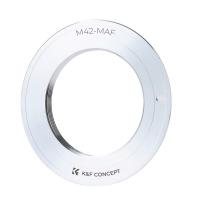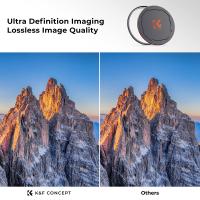How To Use Scanning Electron Microscope ?
To use a scanning electron microscope (SEM), first, ensure that the sample is properly prepared by fixing it onto a conductive surface. Next, place the sample into the SEM chamber and close the chamber tightly. Adjust the vacuum level inside the chamber to create a suitable environment for imaging.
Once the vacuum is established, set the desired operating parameters such as accelerating voltage, beam current, and working distance. These settings may vary depending on the sample and the level of detail required. Align the electron beam to the desired area of the sample using the beam alignment controls.
After the beam is aligned, select the appropriate imaging mode, such as secondary electron or backscattered electron imaging. Adjust the focus, brightness, and contrast to optimize the image quality. Finally, capture the images or perform any necessary analysis using the SEM's software.
It is important to handle the SEM with care and follow the manufacturer's instructions to ensure accurate and safe operation.
1、 Instrument Setup and Safety Precautions
To use a scanning electron microscope (SEM), it is important to follow proper instrument setup and safety precautions. Here is a step-by-step guide on how to use an SEM:
1. Instrument Setup:
- Ensure that the SEM is properly connected to a power source and that all necessary cables are securely attached.
- Turn on the SEM and allow it to warm up for the recommended time period, usually around 30 minutes.
- Check the vacuum system to ensure it is functioning properly. The vacuum is crucial for the SEM to operate effectively.
- Load the sample onto a sample holder or stub, ensuring it is securely attached. The sample should be clean and dry to prevent contamination and damage to the SEM.
- Place the sample holder into the SEM chamber and close the chamber door.
2. Safety Precautions:
- Always wear appropriate personal protective equipment (PPE) such as gloves and safety glasses when operating the SEM.
- Be cautious of the high voltage used in SEMs. Avoid touching any exposed electrical components and ensure that the SEM is properly grounded.
- Follow proper handling and disposal procedures for any hazardous materials used during sample preparation.
- Avoid introducing any magnetic or conductive materials into the SEM chamber, as they can interfere with the electron beam and cause damage to the instrument.
- Regularly clean the SEM chamber and its components to maintain optimal performance and prevent contamination.
It is important to note that the latest advancements in SEM technology have led to improvements in resolution, speed, and ease of use. For example, some modern SEMs now feature automated sample loading and advanced imaging software, making the process more efficient and user-friendly. Additionally, advancements in electron detectors have allowed for the collection of more detailed and accurate data.
In conclusion, using an SEM requires proper instrument setup and adherence to safety precautions. By following these guidelines and staying updated with the latest advancements in SEM technology, researchers can effectively utilize this powerful tool for various scientific applications.
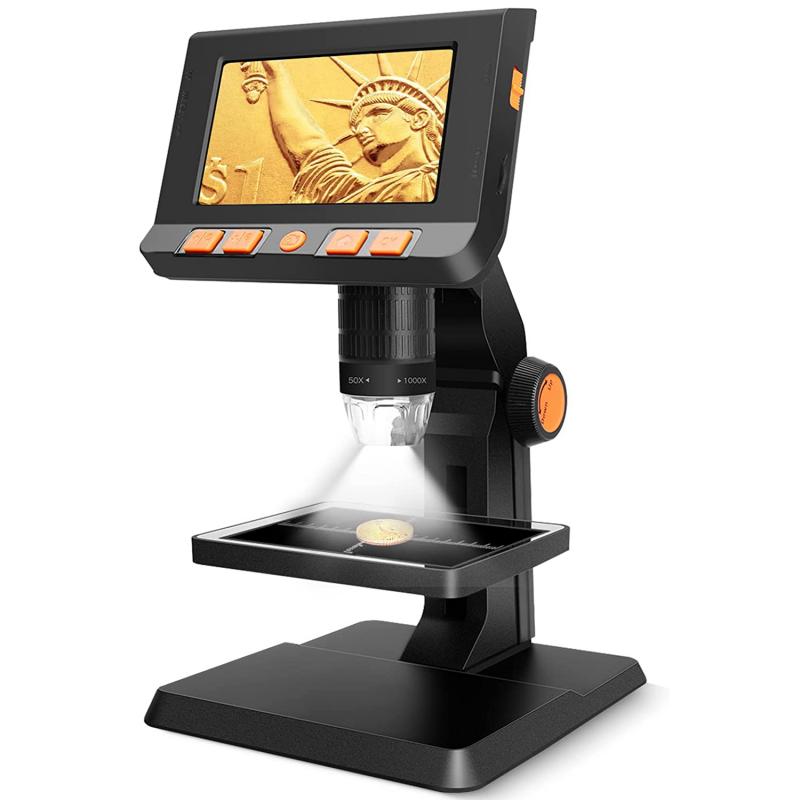
2、 Sample Preparation Techniques
To use a scanning electron microscope (SEM), proper sample preparation techniques are crucial to obtain accurate and high-resolution images. Here is a step-by-step guide on how to prepare samples for SEM analysis:
1. Sample collection: Collect the sample of interest, ensuring it is representative and suitable for SEM analysis. The sample can be solid, liquid, or even biological material.
2. Fixation: If the sample is biological, it needs to be fixed to preserve its structure. Common fixatives include glutaraldehyde or formaldehyde. After fixation, the sample is typically dehydrated using a series of ethanol solutions.
3. Drying: The sample must be completely dry before SEM analysis. Critical point drying or freeze-drying are commonly used techniques to remove moisture without causing damage.
4. Mounting: The dried sample is mounted onto a stub using conductive adhesive or carbon tape. The stub is then placed in the SEM chamber.
5. Coating: To enhance conductivity and prevent charging, the sample is coated with a thin layer of conductive material such as gold, gold-palladium, or carbon. This coating is typically applied using a sputter coater.
6. Adjusting parameters: Before imaging, the SEM parameters need to be adjusted. This includes setting the appropriate accelerating voltage, beam current, and working distance.
7. Imaging: Once the sample is prepared and the parameters are set, the SEM can be used to capture high-resolution images. The electron beam scans the sample surface, and the resulting signals are detected and converted into an image.
It is important to note that sample preparation techniques may vary depending on the specific requirements of the sample and the SEM being used. Additionally, advancements in SEM technology, such as environmental SEMs, allow for the imaging of samples in their natural state without extensive preparation. These advancements have expanded the capabilities of SEM analysis and provided new insights into various fields of research.

3、 Operating Parameters and Imaging Modes
To use a scanning electron microscope (SEM), it is essential to understand the operating parameters and imaging modes. The SEM is a powerful tool that uses a focused beam of electrons to generate high-resolution images of a sample's surface. Here are the key aspects to consider when using an SEM:
1. Vacuum System: SEMs operate under high vacuum conditions to prevent electron scattering. The vacuum system must be properly maintained to ensure optimal imaging quality.
2. Electron Beam Parameters: The electron beam's energy, current, and spot size are crucial parameters that affect image resolution and sample interaction. Adjusting these parameters allows for optimization based on the sample's characteristics.
3. Sample Preparation: Samples must be properly prepared to ensure accurate imaging. This involves cleaning, drying, and coating the sample with a conductive material, such as gold or carbon, to prevent charging and improve image quality.
4. Imaging Modes: SEMs offer various imaging modes, including secondary electron imaging (SEI), backscattered electron imaging (BEI), and energy-dispersive X-ray spectroscopy (EDS). SEI provides topographic information, while BEI reveals compositional contrast. EDS allows for elemental analysis of the sample.
5. Image Interpretation: SEM images require interpretation to extract meaningful information. Understanding the contrast mechanisms and the interaction of the electron beam with the sample is crucial for accurate analysis.
The latest advancements in SEM technology have focused on improving resolution, reducing sample damage, and enhancing analytical capabilities. For instance, field emission SEMs (FE-SEMs) offer higher resolution and improved imaging of nanoscale structures. Additionally, environmental SEMs (ESEM) allow imaging of samples in their natural state, eliminating the need for extensive sample preparation.
In conclusion, mastering the operating parameters and imaging modes of an SEM is essential for obtaining high-quality images and accurate analysis. Staying updated with the latest advancements in SEM technology can further enhance the capabilities and applications of this powerful imaging tool.

4、 Image Acquisition and Optimization
To use a scanning electron microscope (SEM) for image acquisition and optimization, follow these steps:
1. Sample Preparation: Start by preparing your sample for SEM analysis. This involves cleaning the sample to remove any contaminants and ensuring it is dry. If necessary, coat the sample with a conductive material like gold or carbon to enhance image quality.
2. Mounting the Sample: Place the sample on a sample holder or stub using conductive adhesive or double-sided tape. Ensure the sample is securely mounted to prevent any movement during imaging.
3. Chamber Preparation: Open the SEM chamber and ensure it is clean and free from dust or debris. Check the vacuum level and adjust if necessary. It is important to maintain a high vacuum inside the chamber to prevent electron scattering.
4. Aligning the Sample: Use the SEM controls to position the sample in the desired location. Adjust the tilt, rotation, and focus to optimize the image quality. Use the magnification controls to zoom in or out as needed.
5. Image Acquisition: Once the sample is properly aligned, select the appropriate imaging mode (e.g., secondary electron or backscattered electron) and adjust the imaging parameters such as accelerating voltage, beam current, and working distance. Start with low values and gradually increase them to avoid damaging the sample.
6. Optimization: Fine-tune the imaging parameters to optimize the image quality. Adjust the brightness, contrast, and focus to enhance the details of the sample. Experiment with different imaging techniques and parameters to achieve the desired results.
7. Image Analysis: After acquiring the images, analyze them using specialized software. Measure dimensions, analyze elemental composition, and perform other quantitative or qualitative analyses as required.
It is worth mentioning that with advancements in SEM technology, newer models may have additional features such as automated image acquisition, advanced imaging modes (e.g., environmental SEM), and integrated analytical capabilities (e.g., energy-dispersive X-ray spectroscopy). Familiarize yourself with the specific SEM model and consult the manufacturer's guidelines for optimal usage.
